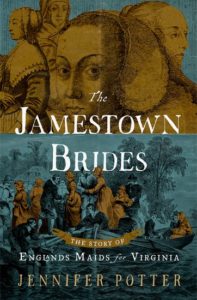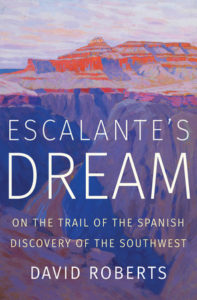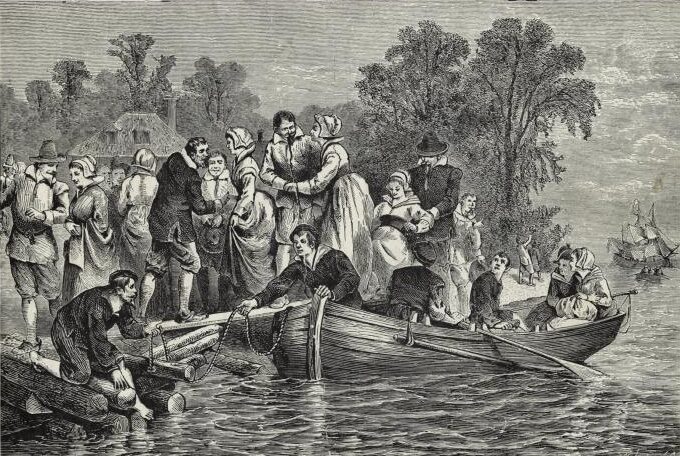The lonely single guys in the Virginia colony paid for female company
Some date the start of the project of settling America to 1620 and Plymouth’s founding, whereas by then Jamestown and Virginia had been around 13 years. The discrepancy has roots in fact. Plymouth was the work of families bent on creating a civilization. Jamestown was as commercial as an open pit mine, to be sustained or abandoned as practicality dictated. However, when economic success required a civilization, Jamestown acquired families.

By Jennifer Potter
(Oxford, 2019; $29.95)
In an account as highly detailed as it is entertaining, Jamestown Brides chronicles an episode in which necessity mandated motherhood. Self-exiled from home by an all-male business structure, Jamestown’s men wanted wives. The Virginia Company, which ran the colony, was going broke. To fill two bills in one stroke, the proprietors shipped 56 women across the Atlantic—their passages and a substantial profit margin charged to the lonely guys mooning around the ramshackle village on the James.
The dames arriving in Jamestown included adventuresses every bit as calculating as the men who booked their berths. A few may have had connections to colonists. Most were fleeing hometown circumstances impeding their ability to wed, their best shot at stable lives. In general, the travelers seemed willing and able to enhance the colony, whether by family ties to the upper or professional classes or with skills and savvy gained as servants and tradesmen’s daughters.
Margaret Bordman and Lucy Remnant were nieces of knights. Ann Harmer’s father was a minor country gentleman’s daughter. Lettice King was a lawyer’s sister. Catherine Finche, the biggest outlier, was indubitably working-class—but her brother made the king’s crossbows, affording his sister access to court. Trades among the emigres’ male relatives tended toward shoemaker, gardener, waterman, and cloth worker. Besides knowing household chores such as churning butter and brewing beer, the ladies could weave and make lace and jewelry.
Addressing as she was emigres from all over Britain boarding various vessels at various times, Potter could have made her saga into a “social history” that homogenized defining details into “typical” experiences. Instead she shows history as it really is—distinct individual experiences she admirably collates into glimpses through fact and anecdote of unique lives lived by remarkable characters.

By David Roberts
(Norton, 2019; $26.95)
In July 1776 a dozen men set out on an expedition that would prove a milestone event in the history of the lands now comprising the mainland United States of America. The party’s leaders were Silvestre Escalante, Francisco Atanasio Dominguez, and Bernardo de Miera y Pacheco. The first two were Franciscan monks, the latter a cartographer. Their colony was New Mexico. The milestone? An exploration intended to discover a land route from New Mexico to Monterrey en route converting to Catholicism the indigenes encountered. It is a fascinating story entertainingly presented by the right man for the job–a man who is not just an accomplished scholar and writer but himself an explorer who, as recently as the 1960s, leaded the first party to travel through Alaska’s Revelation Mountains.
Escalante’s expedition achieved neither intended purpose but nonetheless achieved remarkable success, covering more territory in six months than Lewis and Clark did in two-plus years. Before the unit returned to settled lands after enduring near starvation its members not only had drawn some of the first major maps of the Southwest but also had laid out much of the route between Santa Fe and the Salt Lake Valley. As the Old Spanish Trail, that passage featured prominently in later American settlement of the region.
The expedition’s importance was outstripped only by its boldness. Traversing territory inhabited by some of the most famously violent Indian tribes, including the Apache and the Comanche, its ranks, which included not a single soldier, carried no weapons aside from a few guns for hunting. When a friendly Hopi informed Escalante of a Navajo plan to massacre the explorers, the monk calmly replied that God’s protection could defeat any number of attackers.
“American history” is often distills itself to the history of the United States of America. Some scholars view the history of the British colonies as formative rather than a backdrop, and pre-colonial Native American history is gaining attention, though lack of written records hampers practitioners working that vein. However, the literature almost entirely ignores the role of the Spanish in exploring and settling the southwest remains despite enduring Spanish cultural influence there and the American population’s vibrant Latin American minority. Escalante’s Dream admirably helps to fill that gap.—James Baresel is a freelance writer living in Front Royal, VA.





